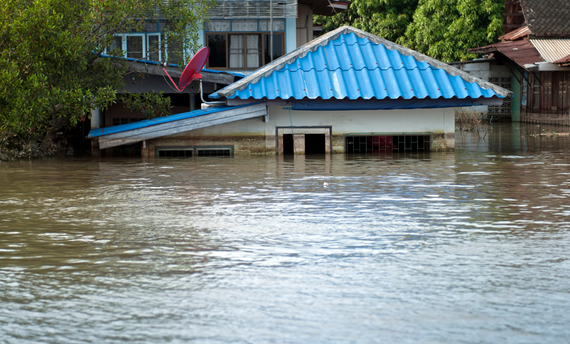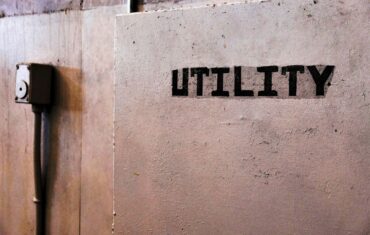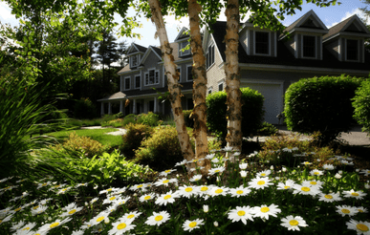Preparing for and repairing after a natural disaster is one of the most important and stressful parts of homeownership. After watching what this year’s brutal hurricane season has done to the east coast, countless homeowners continue to worry about the impact of natural disasters on their property, as no place is truly safe from any natural disaster. Whether it’s a hurricane, earthquake, or wildfire, homeowners should be prepared for all types of climate threats. We’ve laid out key information every homeowner should know before a natural disaster strikes.
HOW MUCH HOME INSURANCE DO YOU NEED?
Natural disasters can be unpredictable, so having the right amount of homeowners insurance to help rebuild the structure of your home, replace belongings, and defray costs if you’re unable to live in your home is imperative.
Determine how much insurance you need to rebuild your home. Standard policies provide coverage for such incidents as fire, lightning, hail, and explosions. Those who reside in areas prone to floods and earthquakes must pay for additional coverage to protect against those disasters; standard policies will not protect against them.
If the limit of your insurance policy is based on your mortgage, it may not adequately cover the cost of rebuilding.
To be sure you have the right amount of structural coverage, consider the following:
- Local construction costs
- The square footage of the structure
- The type of exterior wall
- The style of the house
- The type of roof and materials used
- Other structures on the premises, like sheds or garages
- Special and historic features
- Improvements that add value to the home
- Municipality permitting fees for repairing and rebuilding your home
To get a quick estimate of the amount of insurance you’ll need, multiply the total square footage of your house by local, per-square-foot building costs. To determine construction costs in your area, reach out to your local real estate agent, builders association, or insurance agent.
Homebuyers and homeowners want to ensure their investments are properly protected with a homeowner’s insurance policy that will cover flooding.
Flood insurance isn’t just for High-Risk Zones
If It Rains, It Can Flood.
It’s dangerous for homeowners and homebuyers to assume they are safe from flooding if they are out of a high-risk flood zone. In fact, more than 25% of flood insurance claims come from moderate-to-low zones. While Flood Insurance is required by homeowners who take out a mortgage from a federally regulated or insured lender in high-risk flood zones, everyone lives in a flood zone. It’s simply a matter of estimated risk based on historical data. It takes only a small amount of water to do massive financial damage to a property. According to FEMA, one inch of water can result in $25,000 worth of damage.
Flood Zones May Be Out of Date
Government-designated Flood Zones are out of date in many regions. The Federal Emergency Management Agency (FEMA) is supposed to review and update its maps every five years to reflect flood risks, but many of the maps that people use to determine where to build and whether to get flood insurance date back as far as the 1970s.
So, when purchasing a home, carefully consider the risks of a flood, understand that the current FEMA map may not tell the whole story, and get flood coverage even if you aren’t required to carry it by your lender.
The Downside of Government Aid
The average flood claim is about $29,000, and while you may qualify for government aid if your area is declared a federal disaster area, that aid will come in the form of a loan that must be repaid. Luckily, NFIP claim payments do not need to be paid back and can cover losses even when a disaster declaration has not been made. So, it may be prudent to consider flood insurance for your home even if you aren’t currently located in a designated high-risk area and your lender might not require it.
Delaying cleanup can cost you
If the sting of high-cost repairs not covered by your insurance doesn’t hurt, the code violation citation that your municipality may slap on your home after a natural disaster probably will.
Municipalities don’t waste time handing out citations to residents after a storm. In Miami-Dade County, just hours after Hurricane Irma passed in 2017, residents were issued citations for downed fences, electrical hazards, and pool barrier safety notices before power was even restored. The county handed out about 857 such “safety notices” to homeowners suffering damage after Irma.
While the county contends this was an attempt at public outreach to remind residents about safety hazards during the recovery process, many people, especially those who were given notices, weren’t convinced. Mayor Carlos Gimenez noted that these notices were not official citations and said that the county was not enforcing code violations for 30 days after the storm.
If you are lucky enough to avoid a code violation fee, there are still other fees a homeowner will need to pay. Mainly, securing proper permits after a natural disaster is another added burden to affected homeowners.
Costly permits required to begin home repairs
Depending on the type of damage your home sustains, your municipality may require specific types of permits to be pulled before clean-up or rebuilding can begin. A full construction permit can be an expensive and unexpected cost for many.
Generally, homeowners are required to have a permit for:
- Electrical work
- Mechanical work
- Plumbing work
- Fire protection
- Building construction work
Considering the costs of rebuilding and repairing alone, permit costs are a huge burden on homeowners struggling to get back to normal. While some counties and cities may approve rules to waive such fees in response to a natural disaster, this is not always the case, or the waivers may come with specific caveats that may affect each homeowner differently.
Homeowners should contact their governing municipality before beginning any repairs to ensure all proper permits are pulled, and fees are paid. If not, they may be hit with hefty building code violation fines.
BUILDING CODE VIOLATIONS MAY AFFECT YOUR ABILITY TO SELL LATER
Any unresolved building issues stemming from a natural disaster could have a huge impact on your ability to sell the property later.
Savvy sellers and buyers know the benefits of conducting a full municipal lien search on a property before closing. This search is important to uncover any open municipal code violations or unpaid permit fees that will not be revealed in the title search. While a homeowner may be able to delay paying the fees temporarily, if the homebuyer should request this search and it shows unpermitted work or unpaid code violations, you will eventually have to correct building issues that were not done with the proper permits or pay the fees before closing.
It would be best to make these corrections following your local governing authority’s code the first time instead of having to deal with the problem months or years later and risk delaying your closing.
AVOID FORECLOSURE AFTER A NATURAL DISASTER
In addition to dealing with homeowner’s insurance, government code, and building departments, costly repairs, and loss of income, mortgagors must also worry about staying current on their loan terms with their lenders.
A common fear among housing market experts after a natural disaster is the increase in foreclosures that typically follow due to missed payments. Fortunately, some options exist for homeowners struggling to make mortgage payments after a disaster.
Applying for forbearance
A forbearance is a period in which mortgage payments are suspended. This is an option for most homeowners residing in a declared disaster area, and depending on the lender, there are multiple options that may be available to affected homeowners.
Some key things to remember when requesting a suspension of your mortgage include:
- Every lender varies in its forbearance options.
- FHA, VA, Freddie Mac, and Fannie Mae have specific plans to help mortgagors in designated disaster areas.
- Repayment options can become more of a burden than relief, so read the paperwork carefully before agreeing to new terms.
- Be aware of when the amount will be due in full and if interest will incur on the amounts suspended.
Homeowners should contact their lender immediately after a natural disaster if they are unable to make payments. Before signing any documents, be sure to fully understand the new terms of your payments.
If homeowners are unsatisfied with the option their lender provides, they’re encouraged to reach out to HUD’s National Servicing Center. Additionally, homeowners may contact FEMA for financial assistance.
Related Articles:
- How does forbearance affect selling a home?
- Why Unpermitted Work Should Terrify You
- How Common Code Violations Can Affect Your Home










